Top 15 Foliage Hikes in New Hampshire
Start building your hiking to-do list for the next fall foliage season with our top picks for the best foliage viewing hikes in New Hampshire! We've scoured through all of our state's mountain vistas to select the very best picks when it comes to being inspired by the fall colors. A great foliage view is comprised of a lookout over a valley with predominantly deciduous trees and perhaps a pond mixed in for some variety. Usually the highest mountains aren't the best to take in the seasonal scenery, as you'll want to stay lower to the tree canopy so the colors can stand out more. These are our best suggestions for reasonable day hikes (rated hard or easier) where you'll have plenty of time to absorb the natural beauty. Choose carefully, as you'll only have a couple of weeks each year to make the most of the trademark New England fall foliage display!
Back| 15 | 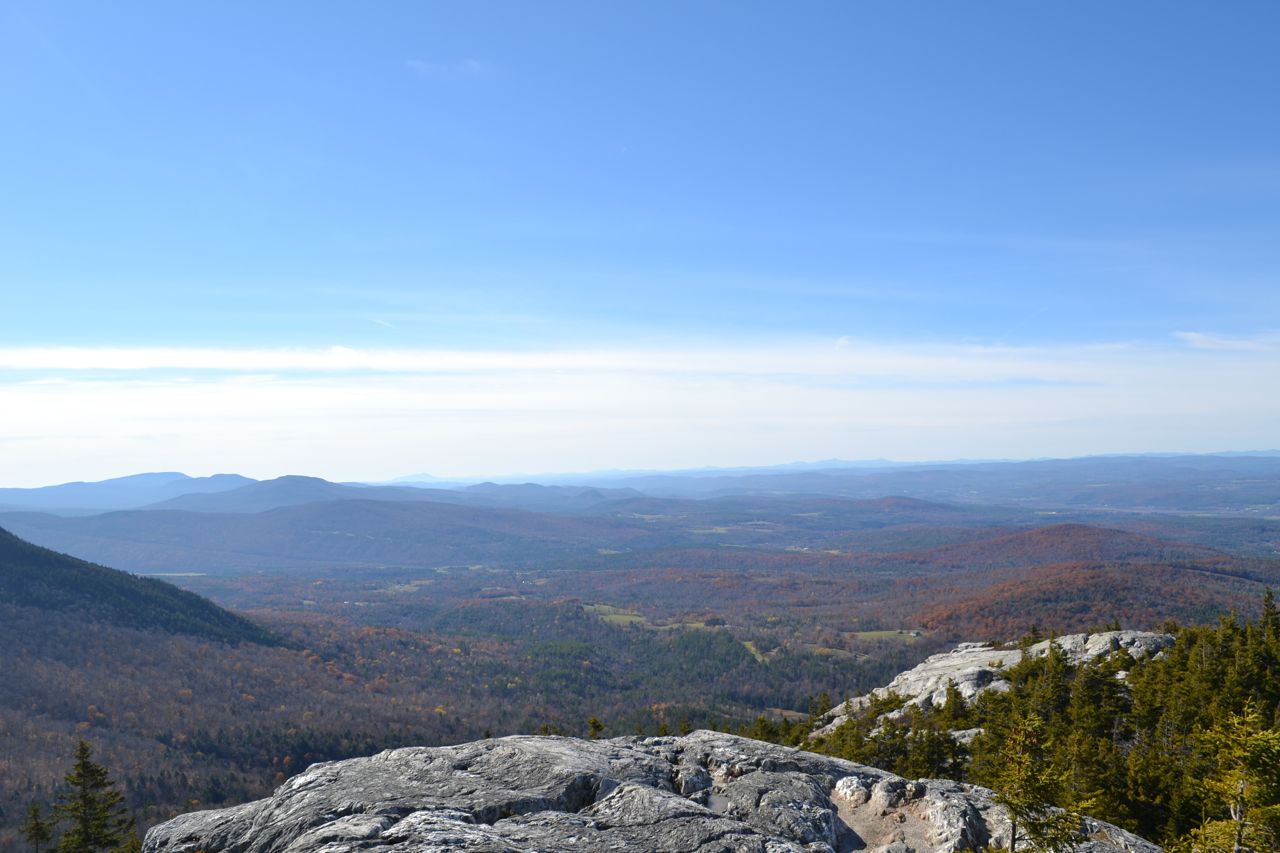 |
Black MountainBenton The quartz-striated ledges of Black Mountain offer a fantastic view out over a lovely, pastoral region of the Connecticut River Valley and out to the Vermont horizons. The patchwork of green farmland makes a striking contrast with the autumn colors, which engulf the mellow hills and valley. Off to the southeast is a fantastic close-up view of Mt. Moosilauke, which rises mightily out of the hollow around Long Pond, which will also have a bright display. On the way up the invigorating Chippewa Trail, you'll have the opportunity to stop at multiple ledge outlooks and preview the view from the top. |
| 14 | 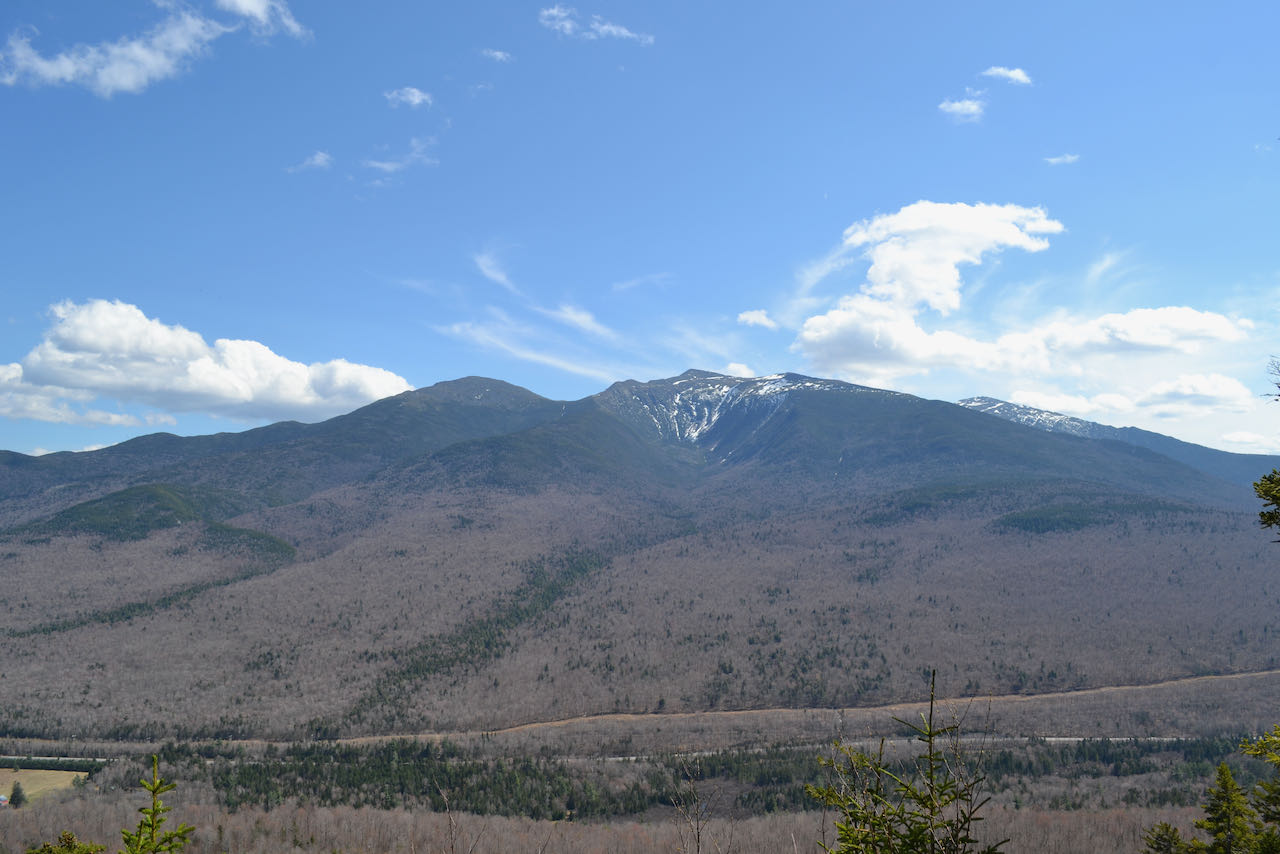 |
Lookout LedgeRandolph The "lookout" of Lookout Ledge has long been treasured for its up-close and personal view of the northern Presidentials, but the fall colors really give it a postcard character. From this mid-elevation perch, you'll take in a stunning color gradient from the rust-colored valley around the Israel River through the cheery yellows of the high-elevation birch forest bands around Mt. Adams and its magnificent King Ravine to the deep greens of the spruce forest and finally the gray alpine caps of the lofty mountains. The blue shimmer of Durand Lake down in the valley will add yet another color to the palette. The mellow Pasture Path, within the extensive trail network of the Randolph Mountain Club, will take you up to the ledge. |
| 13 | 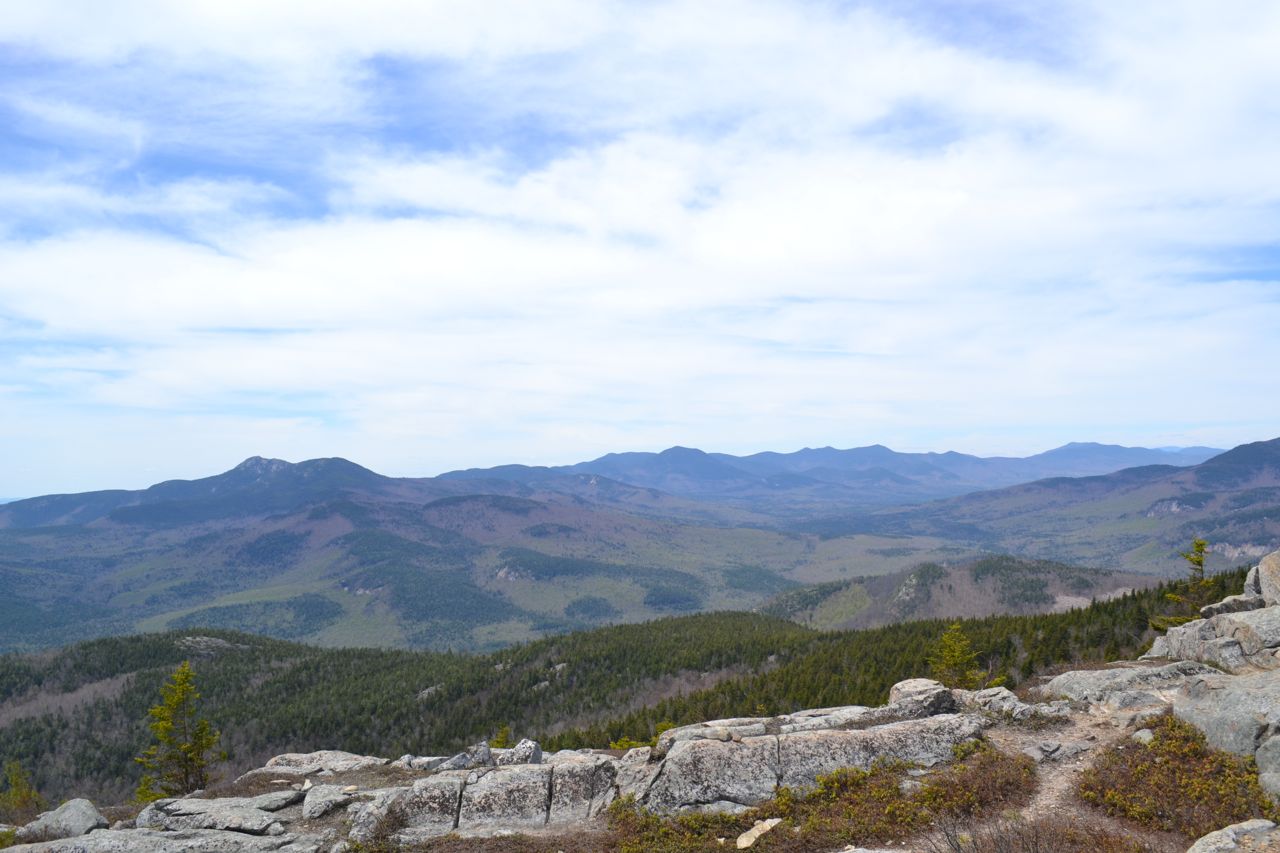 |
South Moat MountainAlbany The breezy open ledges which crown this little knob at the south end of the Moat Range survey the Swift and Saco River Valleys along with the magnificent fall colors which light them up. At any time of year, the panorama seen from the Moats is one of the most magnificent of the sub-4000 peaks in the White Mountains, but in the autumn it is especially grand. Being close to the edge of the central Whites, one side of the view is occupied by sharp peaks with ledges and evergreens that poke up out of the carpet of deciduous trees, while the other side looks out to the horizons of Maine and eastern New Hampshire, where innumerable lakes punctuate the landscape. The hike up is rugged to be sure, but it will be delightful to hike through the lower slopes and preview the colors, and many open ledges will entertain as well as you approach the summit. |
| 12 | 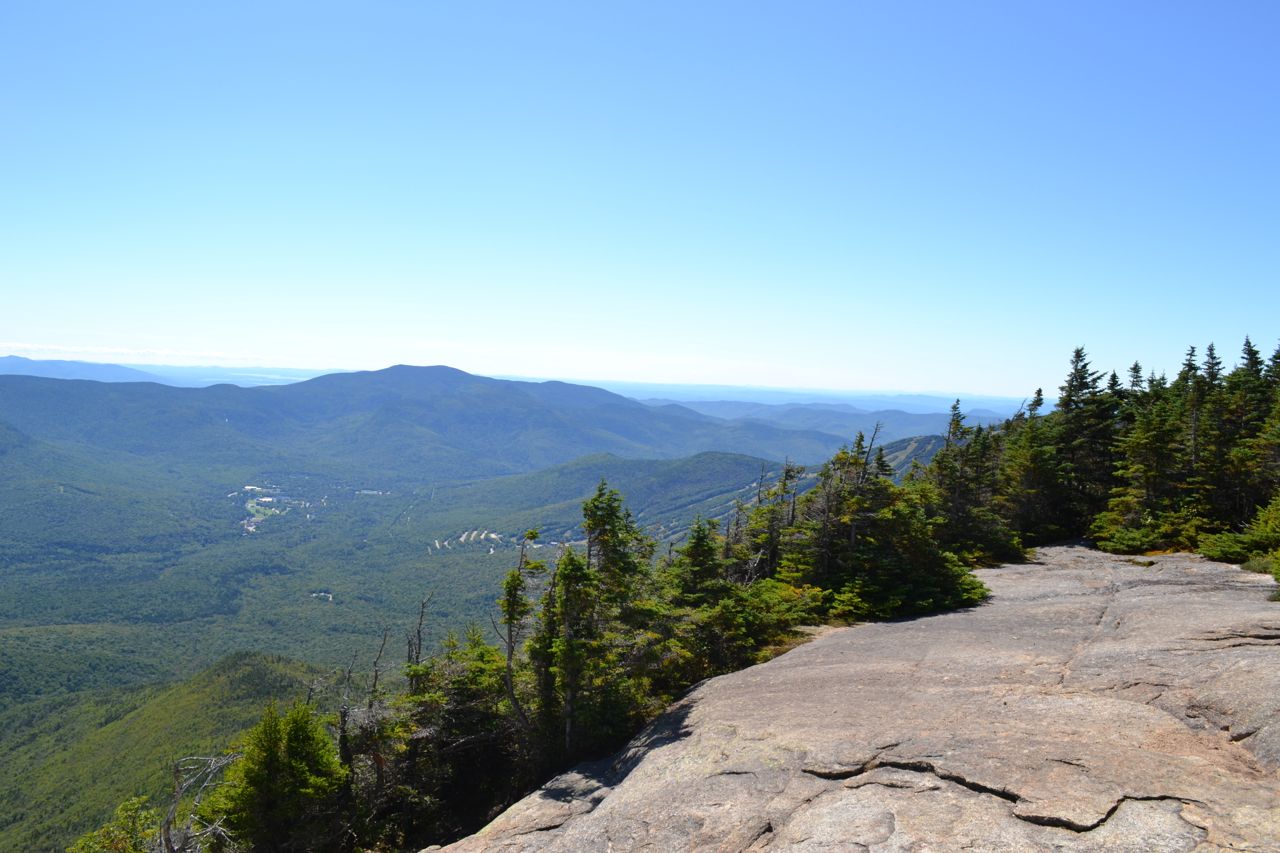 |
Mt. OsceolaLivermore We passed over most 4000-footers when making our list due to the added distance in elevation from the trees which should be the subject of foliage viewing, but Mt. Osceola provides a very intimate view from its sunny ledges over the bowl of Waterville Valley, which will enclose a sea of vibrant colors. The rugged mountain scenery adds to the dynamic as well. If you choose to trek over to nearby East Osceola as well, you can add to your experience a clear view of the deep reds which characterize the display in the valley around the east branch of the Pemigewasset River. Osceola is one of the easier 4000-footers to access, with a trail that is rocky but never too steep. You'll have to consider the popularity factor on this one, though, as parking may fill up quickly on busy days. |
| 11 | 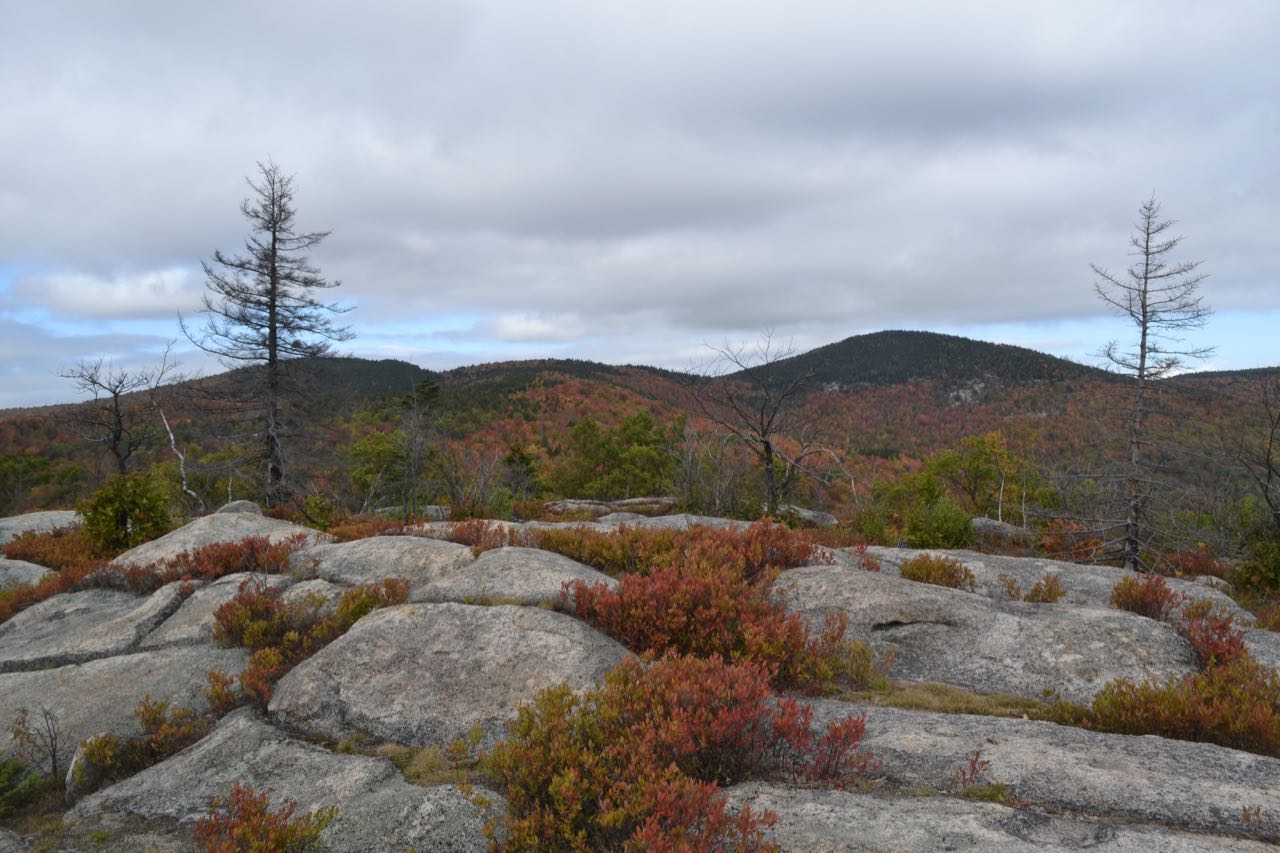 |
Bayle MountainOssipee Just southeast of the White Mountains, in the Ossipee Range, Bayle Mountain offers a secluded getaway from the crowds. Centrally located inside the circular formation of the range, the low-elevation summit overlooks remote valleys which come alight with fall foliage. Several waterbodies nearby contribute to the gorgeous scenery as well. As an added bonus, the rocky dome, which was burned over in a forest fire, is rife with low-growing vegetation, especially blueberry bushes, which turn a beautiful apple hue in the fall. The hike is brief but intense, with plenty of opportunity for exploration around the mountain's boulder fields and extensive ledges. |
| 10 | 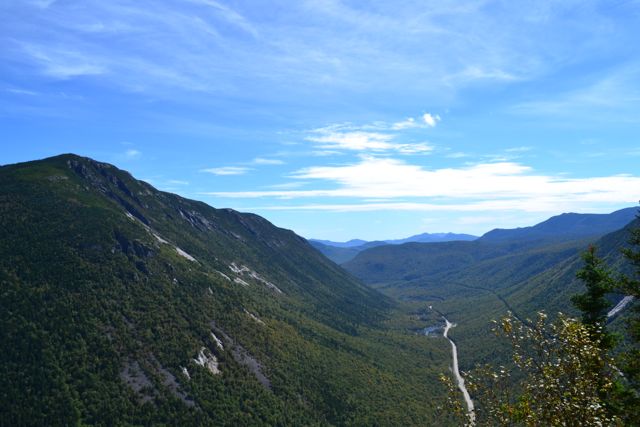 |
Mt. WillardHarts Location Immensely popular, but with good reason, the clifftop lookout near the summit of Mt. Willard commands a breathtaking view straight through the half-pipe of Crawford Notch. The view features an interesting mix of human architecture with rugged mountains of inspiring stature, as you look down upon Route 302 and the parallel Conway Scenic Railroad stringing through the valley of the Saco River. The fall colors pool and saturate the bottom of the valley and creep up the mountains on each side, blending into the evergreens and cliffs. Willard's outlook is one of the easiest high-caliber foliage views to hike to, with just over a mile and a half of walking to do on the easy grades left over from a historic bridle path, but this does mean you'll have to contend with tourist crowds if you visit on a weekend, or a day ending in 'y'. As an added bonus, driving south down Rt. 302 and looking back on the immense cliffs rising from the foliage is nearly as incredible as the summit view. |
| 9 | 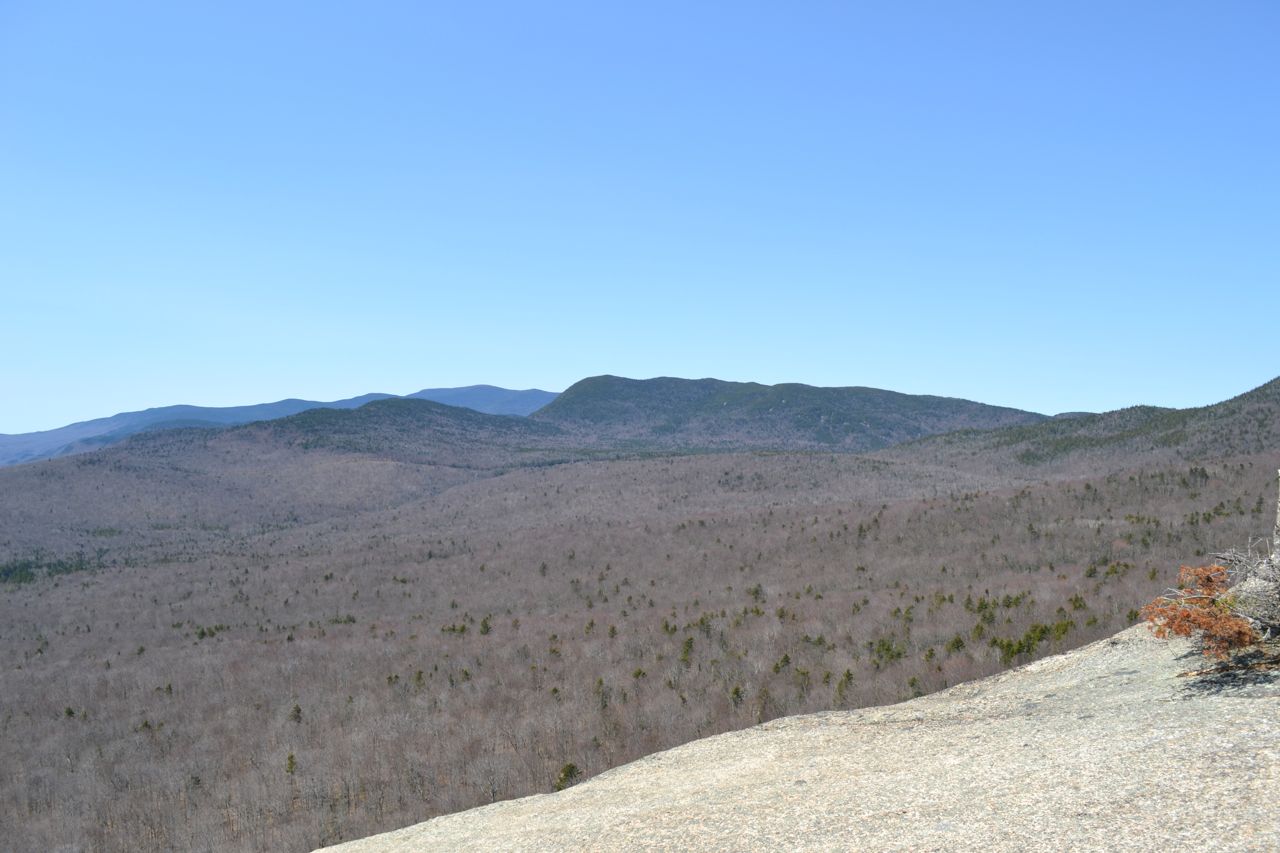 |
Mt. PemigewassetLincoln The south-facing open ledge at the summit of Mt. Pemigewasset overlooks an undeveloped plateau with uninterrupted foliage bliss. Scarcely an evergreen tree can be seen breaking up the sea of fall colors. The view extends south along the central corridor of New Hampshire, the Pemigewasset River, and the colors roll out as far as the eye can see. In its northern section, as the river comes out of Franconia Notch, the foliage around it is especially bright. You can only see one direction from the top, but that’s all you need to see, as you won’t want to turn your gaze from the scene. It’s one of the easier mountains to access, and the hike has such an incredible reward in the fall. |
| 8 | 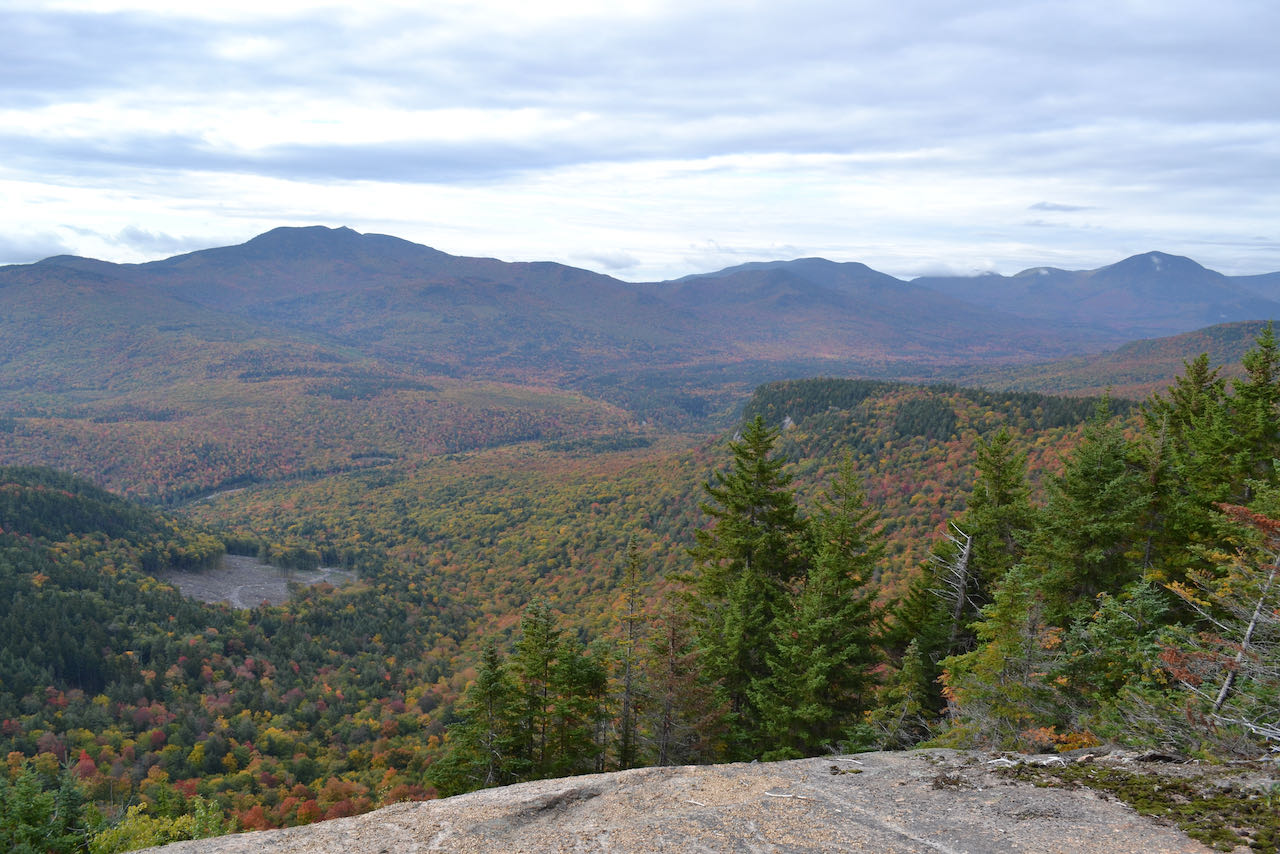 |
Table MountainBartlett A less-known name in the White Mountains, Table Mountain sits in the middle of the Moat Range, just on the east side of Bear Notch Road, where many tourists will drive while on a foliage tour. Its near-summit ledges overlook the south end of the Swift River Valley, which in our opinion is the undisputed best location for fall colors. Looking out over the treetops, the mountain produces a sense of isolation, appearing set-back from the main thoroughfare of the Kancamagus Highway. The hike involves an approach over scenic ledges with increasingly open views of nearby Bear Mountain, which itself lights up pretty well with the autumn colors. |
| 7 | 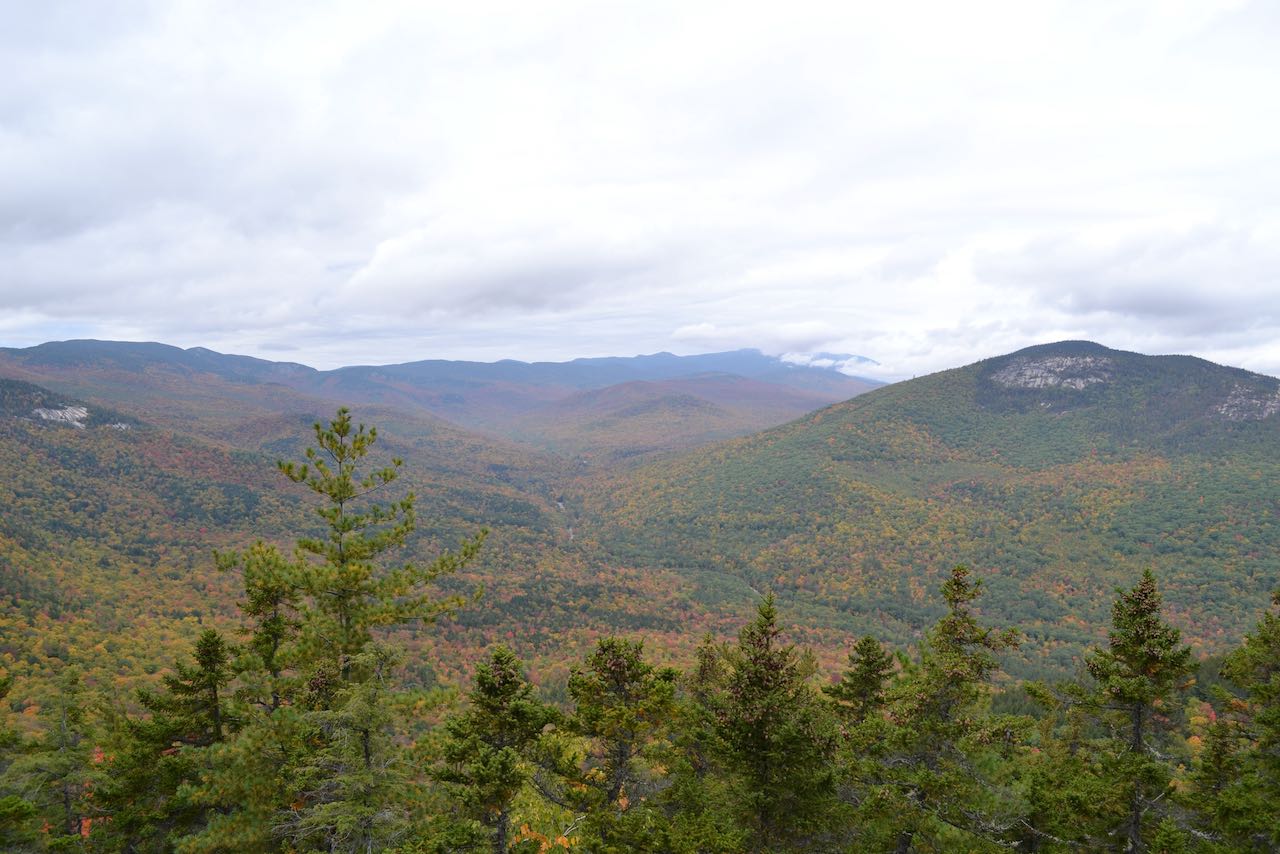 |
Mts. Pickering and StantonBartlett The sprawling Presidential Range encompasses many long ridges and deep valleys, and while its higher peaks are far removed from foliage areas, the rolling hills down low where the range first rises out of the valley floor give an intimate look at the colors. Mts. Pickering and Stanton are the lowest two summits at the end of the great Montalban Ridge, and they lie between the Saco River and Rocky Branch Valleys, both of which are prime foliage locales. A multitude of ledge outlooks across the ridge reveal delightful views of the bright landscape below. On the south side, the foliage mingles with the sandy shores of the Saco and busy downtown Conway, and on the north side, you’ll peer deep into the remote Rocky Branch Valley, where the foliage fills in between the cliff-scarred ridges on each side, with Mt. Washington as a backdrop. The hike is exciting and has plenty of scenic stops along the way. You can enjoy the foliage from inside the woods as you hike over moss and blueberry covered ledges. |
| 6 | 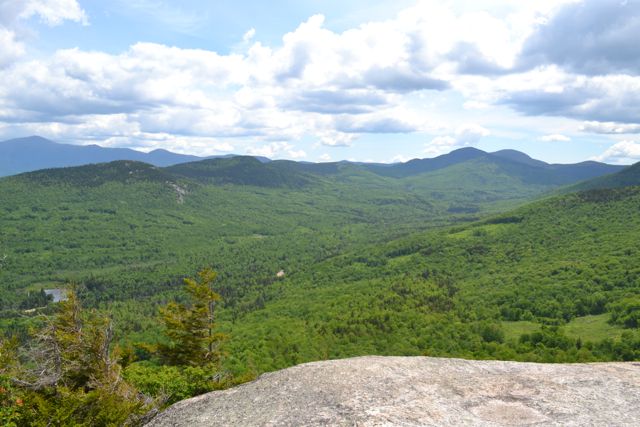 |
Middle and North Sugarloaf MountainsBethlehem The two Sugarloaf Mountains rise above the valley around the hamlet of Twin Mountain and serve as a demarcation point at a major junction for drivers on the standard foliage tour of the White Mountains. The view you’ll see from the summit, however, is far superior to the view from down below. Open ledges wrap almost all the way around the summit of Middle Sugarloaf and provide stunning panoramic views of the carpets of fall colors all around. What makes this view unique is that, while maybe not the most vibrant colors, the land around Twin Mountain shows nothing but deciduous trees all around, making for an uninterrupted carpet of fall beauty. The view also extends into the Zealand Valley, known to exhibit some of the most saturated hues you’ll find anywhere outside of Photoshop. The hike up is brief and fun, starting with a nice walk alongside the Zealand River and ending with a steep stair-climb up to the summit. Be warned - this is another one to arrive to early or hike in a conga line. |
| 5 | 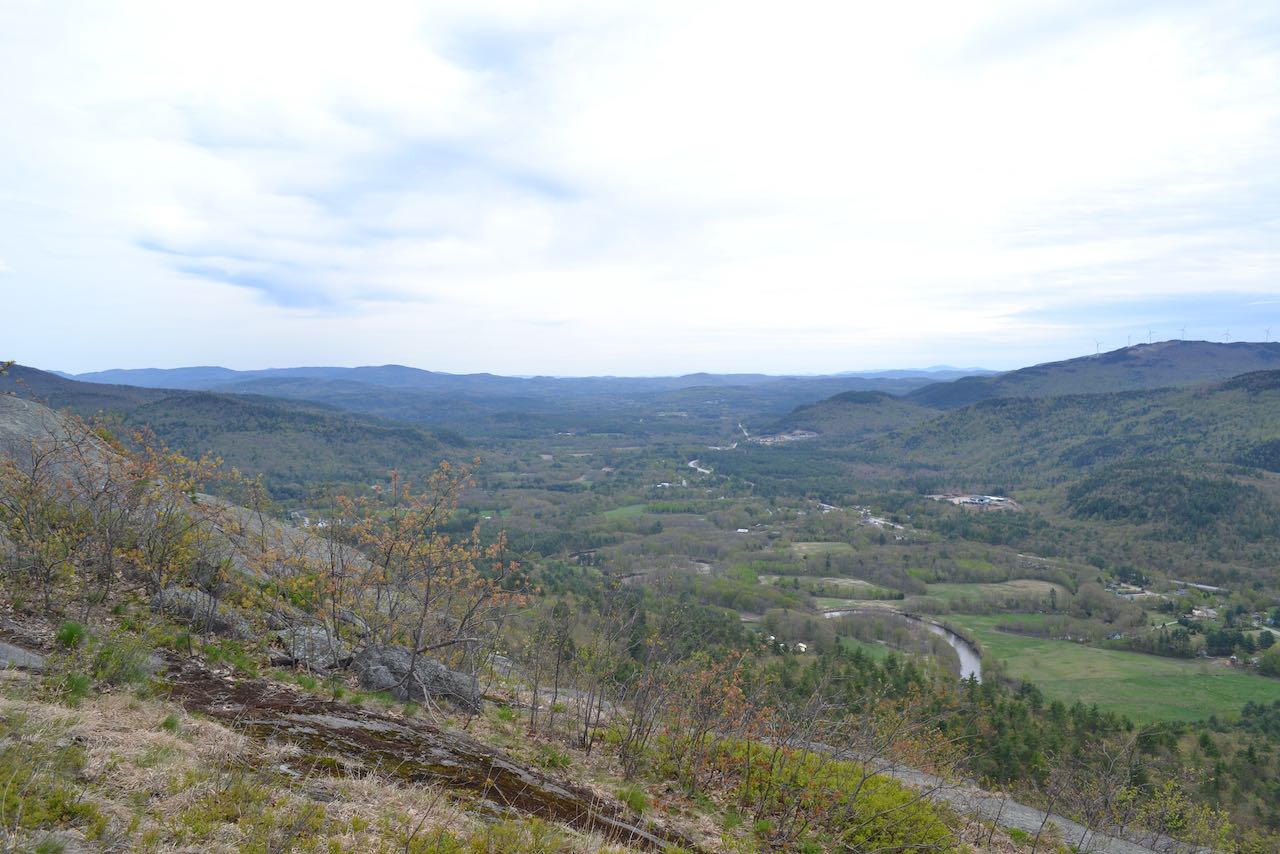 |
Rattlesnake MountainRumney These breezy open ledges at the lowest end of the extensive Carr Mountain ridge sit right above and overlook the pastoral Baker River Valley. The slow river makes long meandering bends in and around open farmland, with the fall colors appearing all around. The quaint Rumney Village completes the scene with everything you’d want to see on a classic postcard (just don’t look west toward the wind farm!). The view up into Groton Hollow is also likely to be quite bright and colorful. All this is yours for the price of a vigorous but very short trek, with lots of room at the top to wander around and explore the various angles over the countryside. |
| 4 | 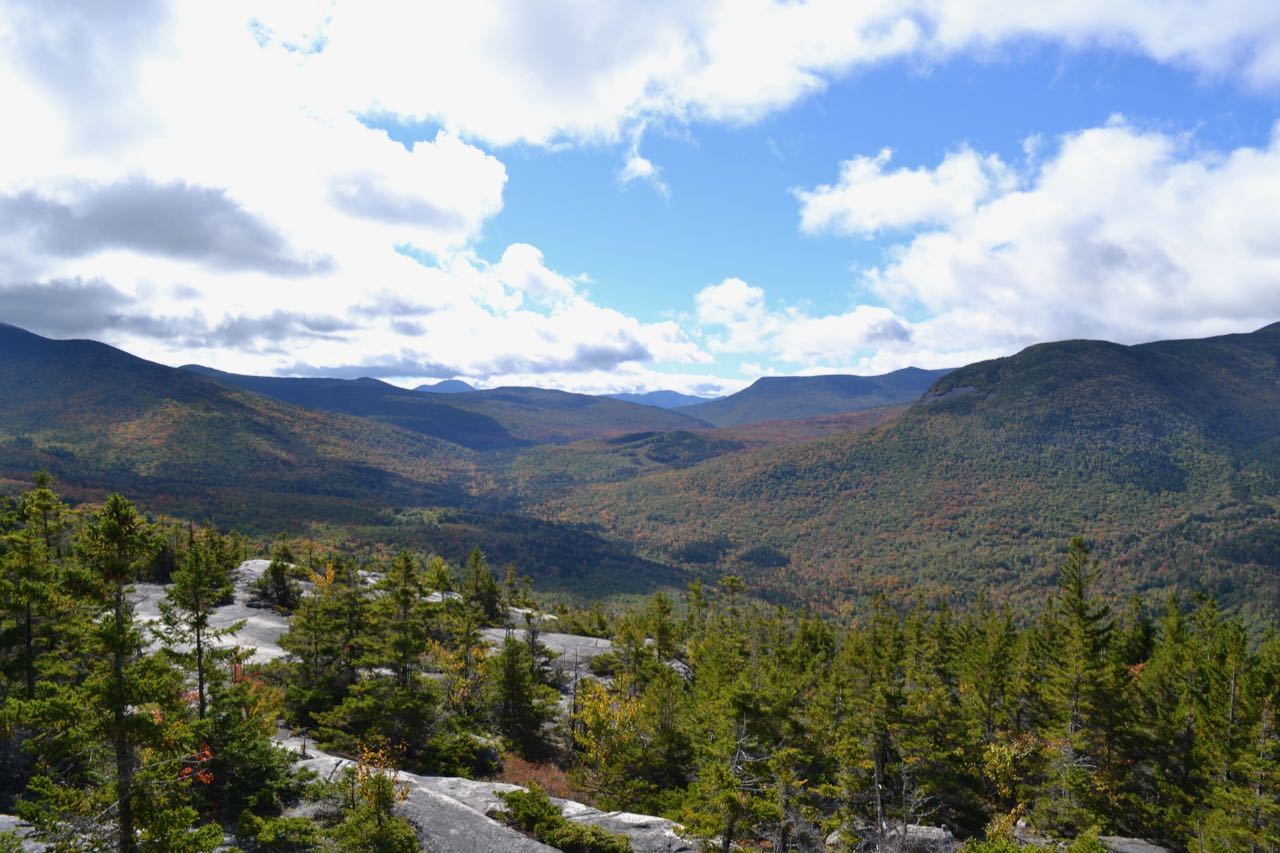 |
Mt. OscarBethlehem Mt. Oscar sees almost all of its visitors in winter, on skis, as they dismount the chairlift at its summit. But very few are aware of the scenic open ledges just on the other side from the ski slopes. The lack of a well-advertised hiking trail keeps it out of the radar for most hikers, although it is well-known with rock climbers. The view overlooks the aforementioned Zealand Valley, but from a much closer perspective than the Sugarloafs. The view extends up the valley toward Zealand Notch, and the foliage fills in throughout. Mt. Hale is right across the way, as are the Sugarloafs, making for a striking contrast between their ledges and the fall colors. Access this view by hiking up the ski trails at Breton Woods. While not the most appealing forest trail, the hike up allows for views over the region north of Crawford Notch, around Mt. Deception, where there are also always lots of colors. |
| 3 | 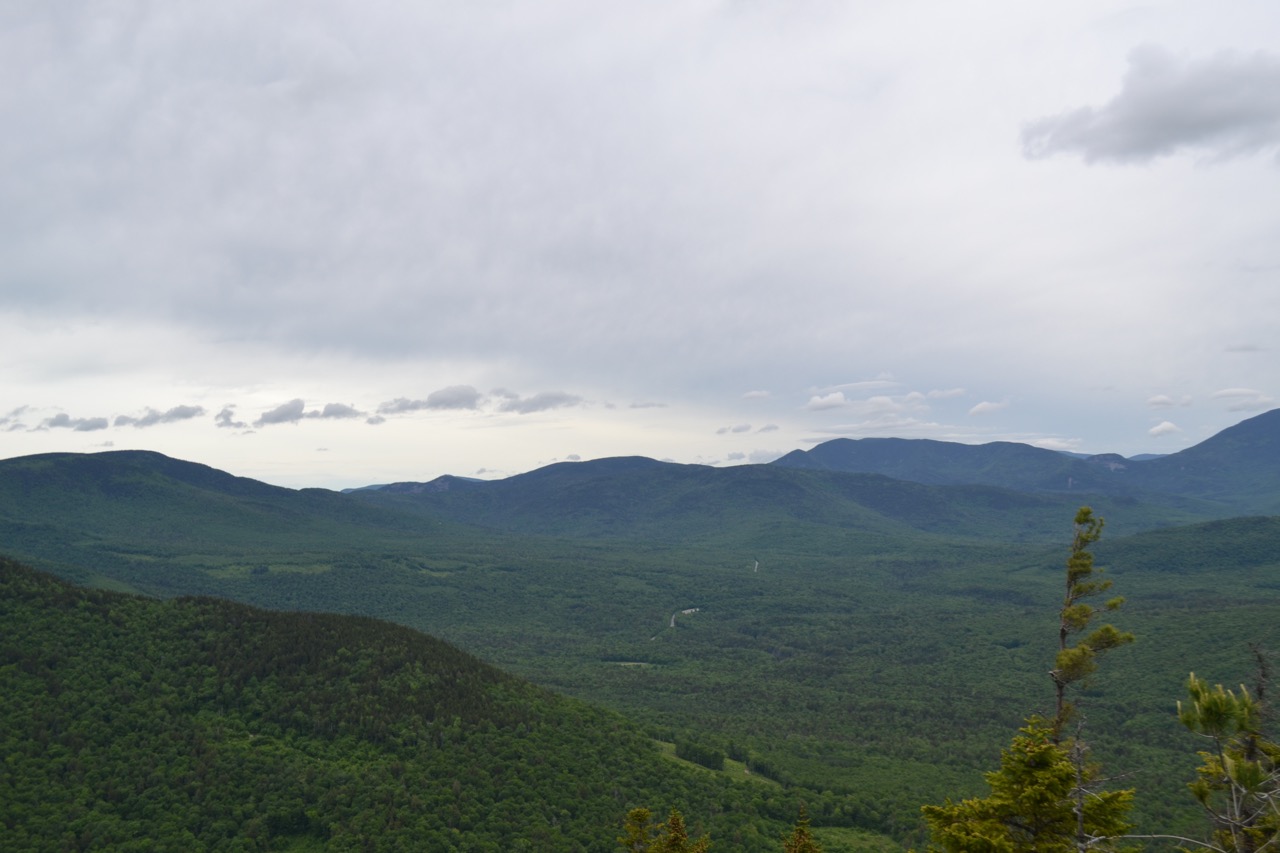 |
Potash MountainWaterville Valley The hike to Potash is an odd one, since if you’re approaching from the south, you’ll drive up over an elevation higher than its summit and drop back down to get to the trailhead. But its diminutive elevation compared to its surroundings makes it a unique vantage point to be amidst spectacular foliage above and below eye level. Being right off the Kancamagus Highway, you’ll make part of the famous foliage driving tour to get to the hike, and then from the summit you’ll look back down on it from above. The vastness of the area that is set ablaze with color is breathtaking. The summit ledges also have a few outlooks directed toward the interior of the Sandwich Range, where the deciduous trees climb high up on the slopes of Mt. Passaconaway and Mt. Tripyramid. |
| 2 | 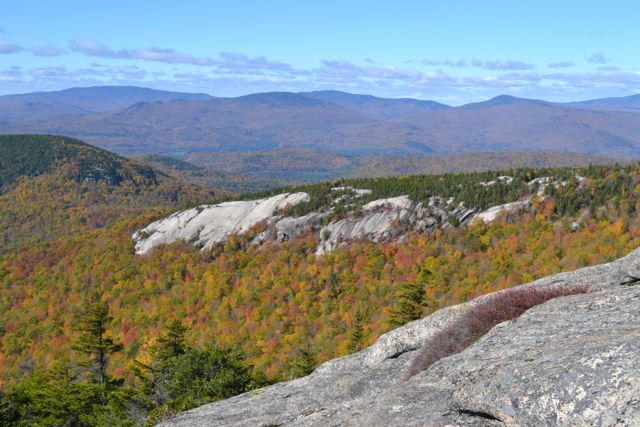 |
Welch and Dickey MountainsWaterville Valley The notoriously popular loop hike over Mts. Welch and Dickey is assuredly one of the best places to see foliage in New Hampshire. Not only is it surrounded by valleys of endless color, the trail over the two sub-alpine summits provides frequent views for almost two miles. Throughout, you’ll enjoy different perspectives on the foliage, starting with an up-close look over the Mad River Valley from the Welch Ledges. As you climb higher, more of the southern scene is revealed, with foliage stretching out far into the distance. The environment around the trail itself is colorful and cheery as well, with patches of forest between ledges and low-growing bushes illuminated. From the summit of Welch, you have one of the most picturesque foliage scenes around, looking over toward a cliff on Dickey, surrounded by deciduous trees. After crossing the summit of Dickey, on the way down, you’ll walk across the top of this ledge and look back out over the sea of color. It’s a classic experience in any season, and the fall colors just make it perfect. Plan around large crowds on this one. |
| 1 | 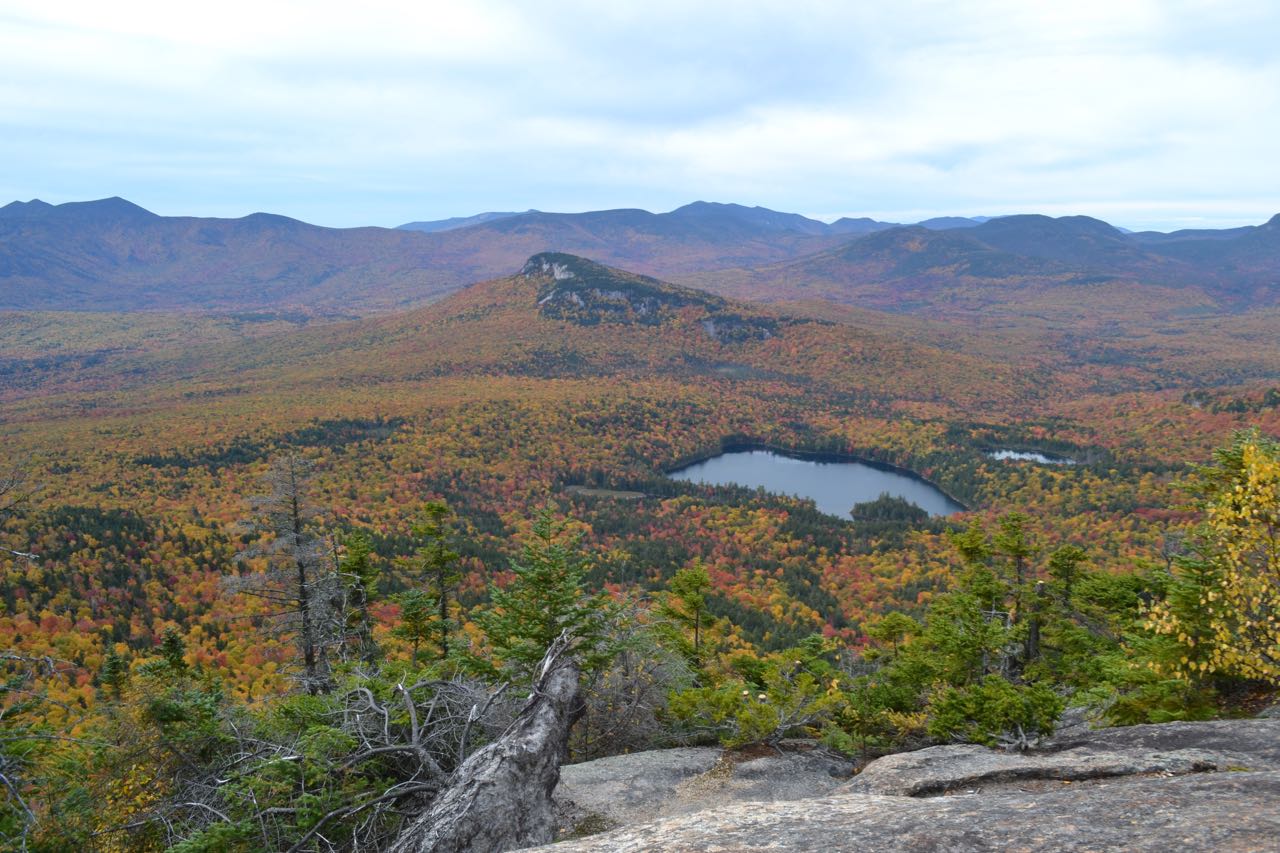 |
Mt. TremontBartlett The quartz-striated ledges of Black Mountain offer a fantastic view out over a lovely, pastoral region of the Connecticut River Valley and out to the Vermont horizons. The patchwork of green farmland makes a striking contrast with the autumn colors, which engulf the mellow hills and valley. Off to the southeast is a fantastic close-up view of Mt. Moosilauke, which rises mightily out of the hollow around Long Pond, which will also have a bright display. On the way up the invigorating Chippewa Trail, you'll have the opportunity to stop at multiple ledge outlooks and preview the view from the top. |